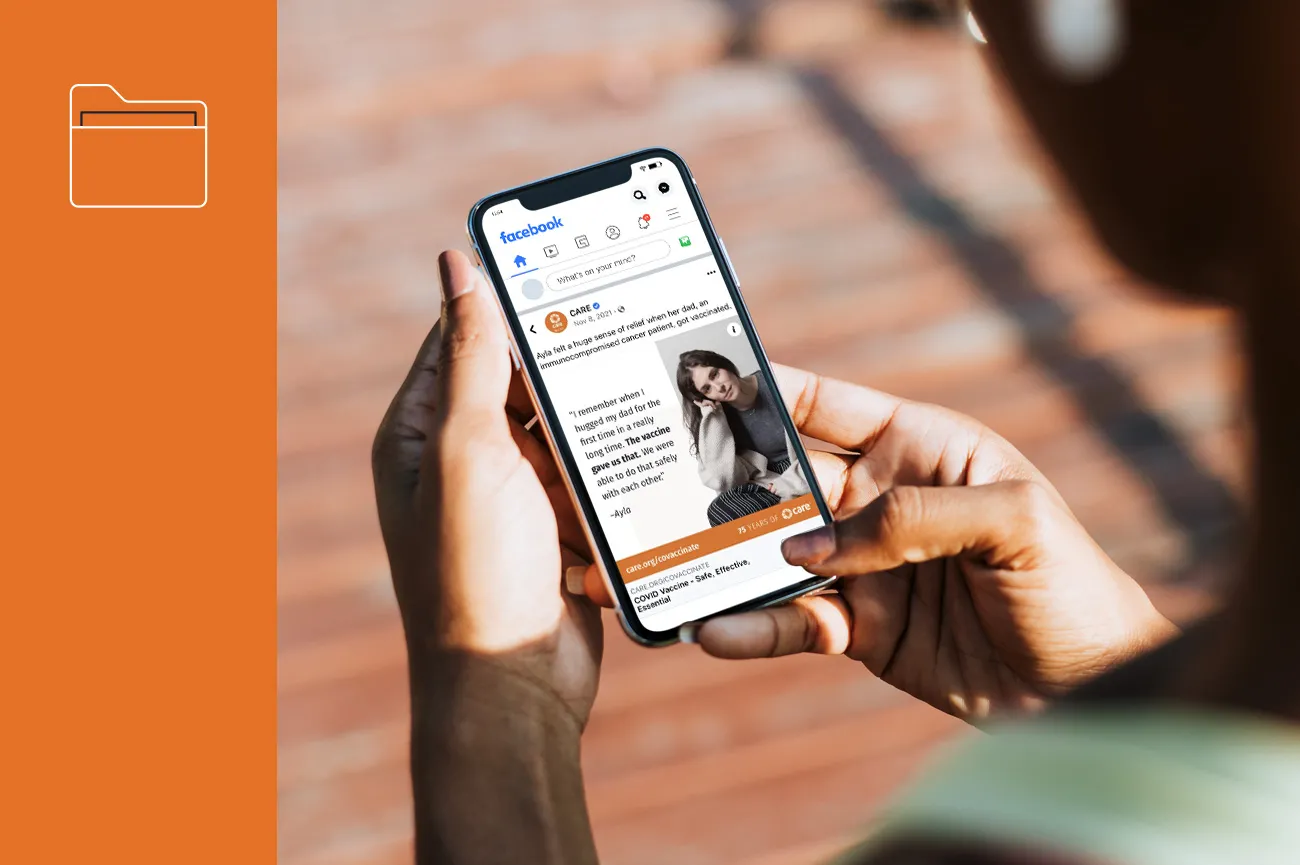CARE Iraq: Exceeding Expectations
With ever-changing social media trends and interests, it can be difficult to connect with large audiences and shape their opinions. Despite these obstacles, some campaigns exceed all expectations. Thoughtful campaign plans lead to well-planned creatives, messaging, and audience targeting. That was the case with CARE Iraq’s July 2022 campaign designed to boost COVID vaccine and booster confidence and preventive practices. Built with purposeful intent, the ads drew an exceptional level of engagement among viewers. A total of 1.6 million people interacted with the campaign’s social posts through likes, comments, and shares, driving an engagement rate of 10.2%.

The country office built on previous learnings that trusted messengers performed well. Four out of CARE Iraq’s five video ads featured real, relatable people: a chef, taxi driver, teacher, and doctor. Featuring people from different walks of life created a sense of relatability and connection for the audience. The video featuring the chef reached 23 million views and the video with the taxi driver generated a very high click-through rate of 0.42%, double the expected platform benchmark of 0.20%.
CARE Iraq Communications Officer Huda Ali, who spearheaded campaign design, said, “The most important thing is for people to know that they are not being ordered to do this or being told this is the right way.” Instead, the purpose is for people to see regular members of their community experience a sense of normalcy and safety after having received the vaccine or booster.
Read more about CARE Iraq’s campaign







